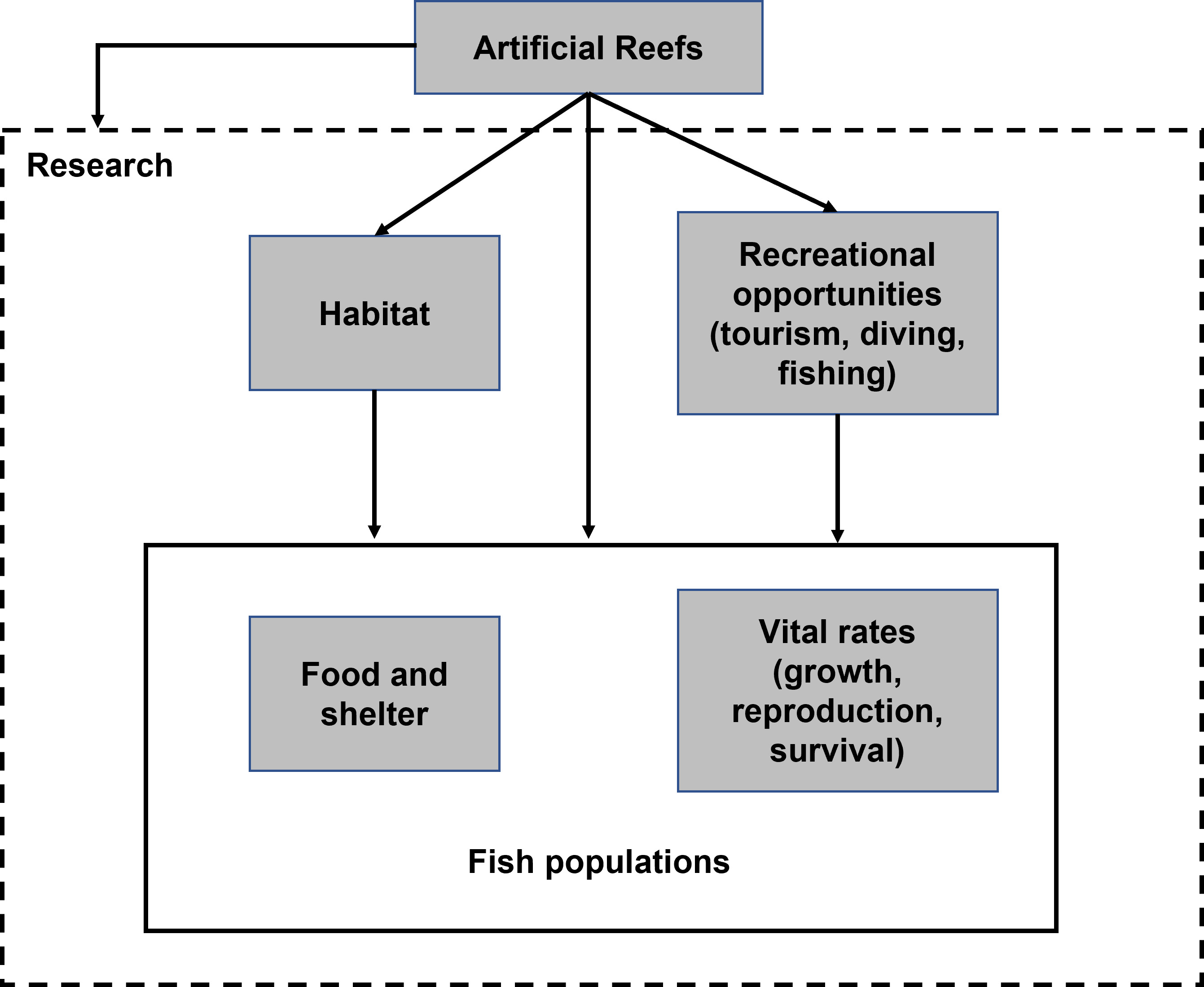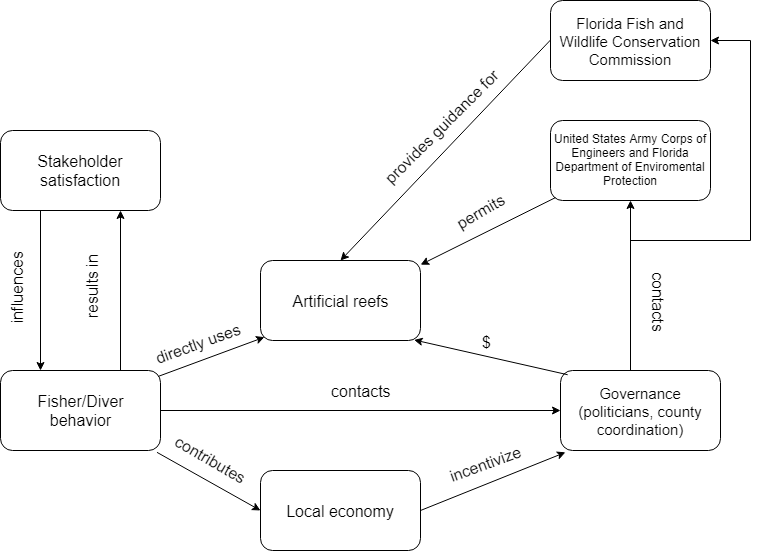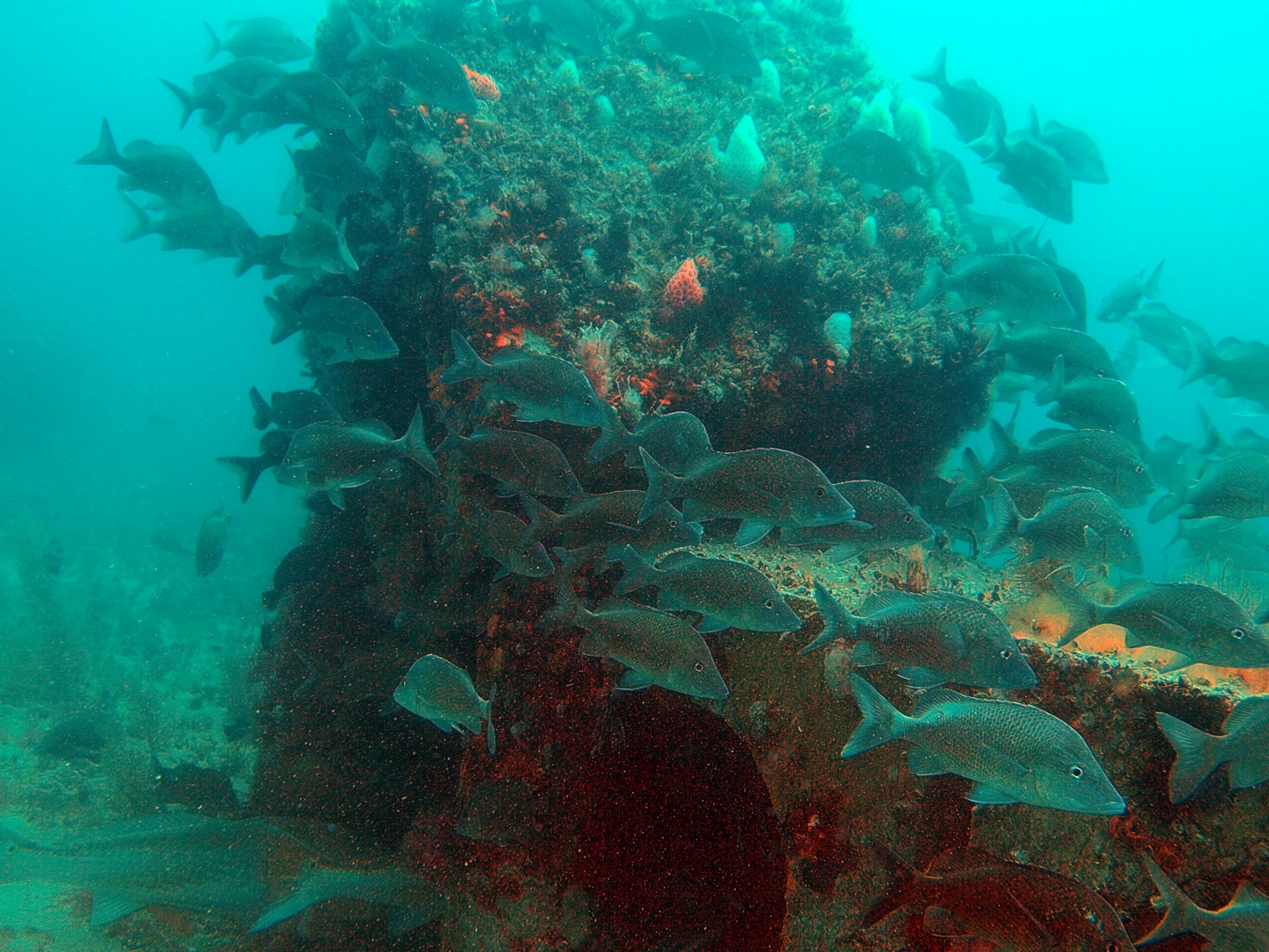Artificial reefs in Florida
University of Florida Extension Documents
EDIS is the Electronic Data Information Source of UF/IFAS Extension, a collection of information on topics. These are developed in support of Extension program area goals and objectives and published by UF/IFAS academic departments.
Artificial reefs in Florida 101
Authors: Lisa Chong (Fisheries and Aquatic Sciences), Angela Collins (Florida SeaGrant), Holly Abeels (Florida SeaGrant), Anna Braswell (Fisheries and Aquatic Sciences), Ana Zangroniz (Florida SeaGrant), Andrew Ropicki (Food and Resource Economics Department), Scott Jackson (Florida SeaGrant), and Edward Camp (Fisheries and Aquatic Sciences)
This four-part series provides an overview of Florida’s artificial reefs for decision-makers, such as local government officials, management agency personnel, artificial reef manufacturers, and extension agents. The publications describe, summarize, and explain scientific information about artifical reefs and break up the topics for easy reading and comprehension.

Part 1 describes why artifical reefs are built in Florida. It serves as a primer for the rest of the series.
Part 2 explains how artificial reefs affect fish ecology. This describes how artificial reefs affect ecological processes and how those changes may translate into species population-level effects.
Part 3 conveys how artificial reefs affect end-users, which an emphasis on fishers and recreational divers. Artificial reefs can affect behavior by fishers and divers, which include choosing where, how much, and which species to target when fishing.
Part 4 describes how the overall fishery system (fish, fishers, and divers) are affected by artificial reefs. It builds off information from the previous publications and goes into the trade-offs and benefits of artificial reefs.
Overview and updates of artificial reefs in Florida
Artificial Reefs and People: how we create them and how they affect us: This is an overview of how people are involved with artificial reefs. Artificial reefs affect users, local economies, government, state scientists, and managers.

An update on Florida’s artificial reefs: recent deployments and trends: This reviews artificial reef deployments from 2015-2021 by region.

An update on Florida’s artificial reefs: recent research and what it means for Florida: This summarizes peer reviewed publications on key topics in artificial reefs literature, including marine ecology, fisher behavior, design, and monitoring.
